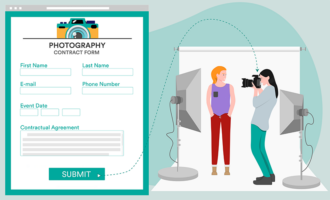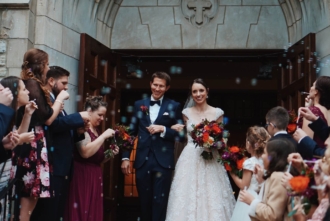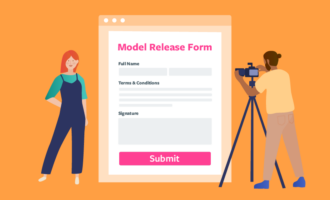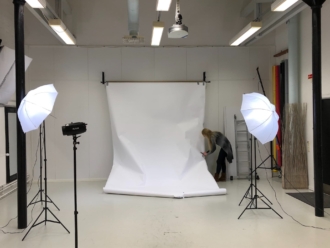3 tips to improve photography website
- Identify your ideal client avatar
- Determine your unique selling proposition
- Optimize the most important pages on your website for conversions
When it comes to marketing your photography business online, there are dozens, if not hundreds, of tactics you can implement.
In fact, the search term “how to market your photography business online” returns 467 million results, while “web marketing for photographers” returns 695 million.
As a busy professional photographer, you don’t have time to sift through millions of results, read hundreds of blog posts, or try six dozen different online marketing strategies to generate more leads.
What you need is an effective online marketing strategy that leaves plenty of time for mastering your craft and working with clients, and it all starts with your website.
Your website is the central hub of all the online marketing you do, so it’s imperative that it be optimized to attract ideal prospects, convert prospects into high-quality leads, and transform leads into dream clients.
While the tips here aren’t of the easy-to-implement-in-under-an-hour variety, they do make up the foundational work that every business must do to get traction online and stand out among the competition.
Here are three ways to improve your photography website to get more leads and bookings:
Identify your ideal client avatar (ICA) and speak to them in your web copy
Determine your unique selling proposition (USP) and convey it throughout your website
Optimize the most important pages on your website for conversions
Many photographers skip this process, believing that it’s enough just to have a web presence and drive traffic to it.
Unfortunately, it isn’t.
To attract and convert your ideal clients, you need to understand who you’re serving; what their pains, fears, and frustrations are; and how the service you offer alleviates those pains and frustrations.
You’ll use this information, together with the factors that set you apart in your niche (which we’ll cover next), to create a compelling marketing message that attracts and converts your ideal clients.
Keep in mind that when gathering information about your target audience, it’s important to go deeper than merely collecting demographic data.
For example, let’s say you’re a boudoir photographer. What does your ideal client want?
Sure, she wants to book a session so she can get flattering photos that make her look beautiful, and she’s likely giving these as a gift to someone.
If you dig deeper though, you might find that what she really wants is to feel better about herself after giving birth to her first child, regain her confidence after a breakup, or document her progress after getting in the best shape of her life.
But you won’t know these things if you’re building your ideal client avatar based solely on demographic data. And that means your web copy won’t connect with your ideal clients’ deepest desires.
The result? Fewer leads.
One of the best ways to gauge the concerns and needs of your target audience is through a questionnaire. With Jotform, you can build a customized questionnaire specifically for your audience using the drag-and-drop Form Builder.
Simply create your questionnaire, send it to your email list, or publish it on your website, and then start collecting data you can use to create a compelling marketing message for your desired audience.
As a professional photographer with an online presence, you’ve no doubt come up against this nagging problem: There are hundreds, if not thousands, of competitors in your niche, offering the same kind of services you offer.
How in the world are you supposed to compete with that, unless you compete on price? (Spoiler alert: You don’t need to compete on price if you get your USP dialed in.)
Your unique selling proposition is the collection of factors that makes someone in your target audience want to do business with you instead of others who offer a similar service. It’s important to note that your USP is not typically any one thing; it’s a combination of factors — more like a recipe than a single ingredient.
Your USP is made up of your unique process, your personality, your backstory, your photography genre or specialization, your photography style, and your target audience.
Once you know who your ideal clients are and what your USP is, you’re ready to answer the all-important question, the answer to which becomes the compelling marketing message of your entire business:
Of all the other [insert your niche] photographers out there who are equally talented, skilled, and experienced, why should my ideal clients choose me?
Here’s a real live example of a marketing message for a luxury wedding photographer based on his ideal client avatar and unique selling proposition:
“I’m a North Carolina wedding photographer specializing in fashion-inspired bridal portraits and luxury wedding photography for stylish, fun couples who value photography as an art, and want a high-end, signature experience on their wedding day.”
Here’s one for a wedding photographer based in Arizona who specializes in fine art wedding photography for first-time brides:
“I’m an Arizona fine art wedding photographer who specializes in working with modern young first-time brides who want fine art quality photography, a friendly partner in the planning process, and someone who can make them feel relaxed, at ease, and naturally beautiful in every single shot.”
Now when someone in your desired audience lands on your site and sees how you’re different from all the other photographers they found in an online search, they’ll explore your website to find out how to contact you.
This is because you’ve created your messaging based on what your ideal clients want and need, and you’ve added the unique way you address those needs (your USP) to the mix.
You can make it easy for prospects to reach out to you using a beautifully designed, custom contact form embedded on your website.
We’ve got our marketing message. Believe me, that’s the hardest part.
Now comes the easy — well, easier — part.
Once you’ve created a compelling marketing message (or at least the first iteration of it) based on your ICA and USP, you can weave it in throughout all of your web copy to attract, connect with, and convert your ideal clients.
Next, determine the goal for each web page, and optimize each page for that conversion. The three most important pages of your website to focus on are the homepage, the about page, and the services or “Work With Me” page.
With each of these pages, ask yourself, “What’s the most important thing I want visitors to do after they read this page?” Then insert that call to action in a prominent location on the page.
For your homepage, your goal might be to get visitors to sign up for your email list. In that case, a prominently placed email signup form near the bottom of the homepage (that doesn’t require visitors to scroll down too far) is your best bet.
On your services page, your goal may be to have your web visitors fill out a photography session booking form.
On your about page, where you’ll talk about how you work, your photography style, and a bit about your background, the next natural step may be to provide visitors with a contact form in case they have further questions.
Any extraneous copy, content, or graphics that create confusion around the page goal should be removed or put in a better location. For example, prominent social media icons near your primary call to action — no, no, no, don’t do it. You want people to stay on your website, because that’s where the important conversions take place.
The bottom line is, you don’t want to make it easy for your web visitors to wander around, confused about what to do next, and get pulled back into the Google or social media netherworld.
Conclusion
You have many options when it comes to marketing your photography business — SEO, social media marketing, paid advertising, content marketing, in-person networking, earned media (publicity), and a long list of other tactics.
But the truth is, unless you have your ideal client avatar, unique selling proposition, and stand-out messaging dialed in and placed on the main hub of your business — your website — the attention generated by these other methods won’t be nearly as effective.
If your time is valuable (and it is), and there’s not much of it (I bet there’s not), these three tips will be your best bet for successfully marketing your photography business online.











































Send Comment: